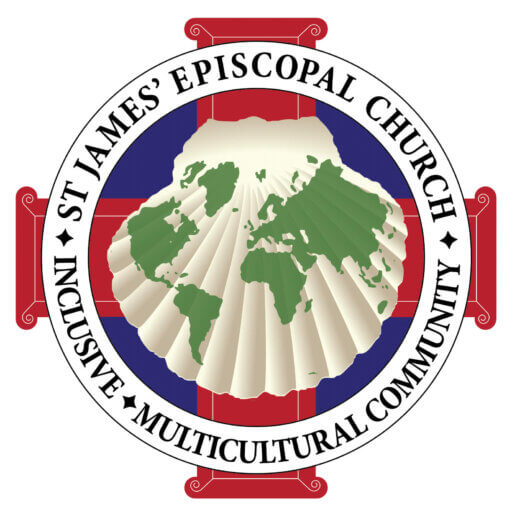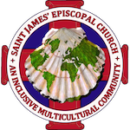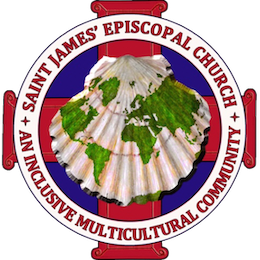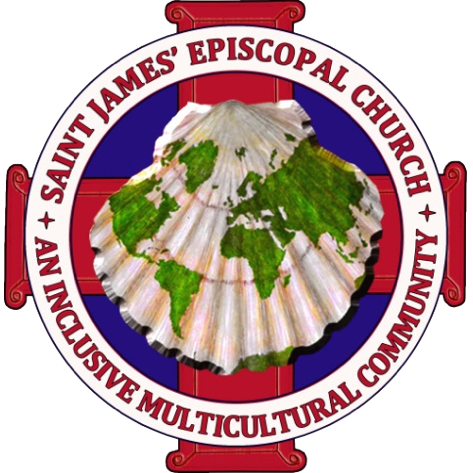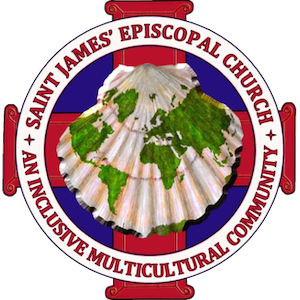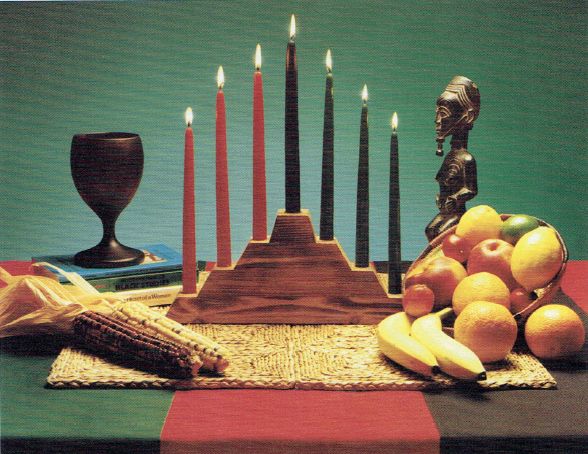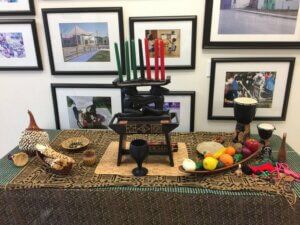 Observing Kwanzaa and celebrating our history, our families, our communities, our culture, our origins, and our faith are longstanding traditions of St James’ Episcopal Church and the Union of Black Episcopalians – Myra McDaniel Chapter.
Observing Kwanzaa and celebrating our history, our families, our communities, our culture, our origins, and our faith are longstanding traditions of St James’ Episcopal Church and the Union of Black Episcopalians – Myra McDaniel Chapter.
Each year we gather together to reflect upon the principles of Kwanzaa. This is the time for recollection, remembering, reflection, reaffirmations, and togetherness of family, culture, and friends. St. James’ welcomes and gives thanks for life blessings, unity of the family, our origins, culture, and the reverence of our ancestors. We share awareness and appreciation of African heritage here and everywhere by reflecting upon cultural connections to our common cradle of civilization, unifying and strengthening our faith in purposeful living, demonstrating that we are created from uniquely determined people.
About Kwanzaa
Kwanzaa is an African American and Pan-African holiday which celebrates family, community and culture. Celebrated from December 26 thru January 1, its origins are in the first harvest celebrations of Africa from which it takes its name. The name Kwanzaa is derived from the phrase “matunda ya kwanza” which means “first fruits” in Swahili, a Pan-African language which is the most widely spoken African language.
The Greeting
Habari gani? (Swahili for what’s the news) is the official greeting spoken during the 7 days of Kwanzaa. The response is the principle of the day.
Nguzo Saba (The 7 Principles):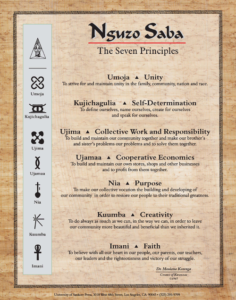
December 26: UMOJA (oo-moe-jah) ~ Unity
December 27: KUJICHAGULIA (koo-gee-cha-goo-lee-ah) ~ Self Determination
December 28: UJIMA (oo-gee-mah) ~ Collective Work & Responsibility
December 29: UJAMAA (oo-ja-mah) ~ Cooperative Economics
December 30: NIA (nee-ah) ~ Purpose
December 31: KUUMBA (koo-oom-bah) ~ Creativity
January 1: IMANI (ee-mah-nee) ~ Faith
The Symbols:
Mazao (The Crops): These are symbolic of African harvest celebrations and of the rewards of productive and collective labor.
Mkeka (The Mat): This is symbolic of our tradition and history and therefore, the foundation on which we build.
Kinara (The Candle Holder): This is symbolic of our roots, our parent people — continental Africans.
Muhindi (The Corn): This is symbolic of our children and our future which they embody.
Mishumaa Saba (The Seven Candles): These are symbolic of the Nguzo Saba, the Seven Principles, the matrix and minimum set of values which African people are urged to live by in order to rescue and reconstruct their lives in their own image and according to their own needs.
Kikombe cha Umoja (The Unity Cup): This is symbolic of the foundational principle and practice of unity which makes all else possible.
Zawadi (The Gifts): These are symbolic of the labor and love of parents and the commitments made and kept by the children.
Bendera (The Flag): The colors of the flag are black for the people, red for their struggle, and green for the future and hope that comes from their struggle. It is based on the colors given by the Hon. Marcus Garvey as national colors for African people throughout the world.
